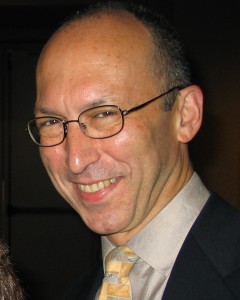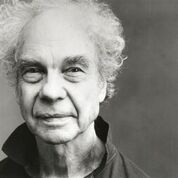Compelling Others To Carry On The Legacy Of A Dance Legend: TACA Perforum
ArtandSeek.net October 23, 2018 12The year’s TACA Perforum tackles different ways arts organizations can meet community needs. Last week, moderator Zannie Voss laid out the gist of the conversation, which takes place Monday. This week, the Perforum panelists are guest blogging on Art&Seek. Up today, Ken Tabachnick, Executive Director at Merce Cunningham Trust, writes about the interesting circumstances the Trust confronts, carrying on the legacy of a dance legend.
When I was hired as the Executive Director of the Merce Cunningham Trust, I was tasked with two core mandates: design and oversee a Centennial celebration for Merce Cunningham and consider the Trust “business model” and how sustainable it is into the future. I learned very quickly that the Trust offers a unique set of circumstances, all of which need to be viewed through the lens of “What does our audience want?”

Ken Tabachnick
The Trust is the repository of Merce Cunningham’s intellectual property and our mission is to preserve, maintain, and present that work to the public, enlarging our impact as much as possible. The assets we have include choreography for more than 190 dances, more than 50 film works we can distribute, writings, a dance technique, and some cash in the bank. Uniquely among choreographic trusts, we do not have a dance company, we do not have any beneficiaries that require income distributions, and we do not have a school.
After strategic analysis, we could see that the success of preserving and disseminating the legacy into the future depends critically on people knowing who Cunningham was, what his work is, and caring enough to want to engage with it. This proposition is complicated by the fact that the work itself is a bit rarified and not immediately as accessible as that of George Balanchine, or Mark Morris, or Beyoncé’s.
Currently, the majority of people who license Cunningham works or want to offer programs of his work are people who already have some engagement with Cunningham: they were in the company, took class in his technique, presented his work, or saw performances of his work. Our conclusion, then, is that we would have to proactively find ways to build interest and relevance for our audience if we wanted to sustain the legacy in the future when those currently engaging left the scene. The better we could do that, the larger the audience and the greater our potential success.
As I considered both the immediate mandate of the Centennial and the longer term mandate of examining the Trust’s future possibilities, I saw that we had no “product” that would determine our market limits and we could, if approached in the right way, have limitless opportunity to reach people. Put another way, without the need to “sell” dance company performances or classes, for example, and absent a need to generate earned revenue to support our operations or obligations, we were free to creatively use our resources and assets in any way we believed they would forward our mission.

Merce Cunningham. Photo: Annie Liebovitz.
With this in mind, and being convinced that our future success was dependent on proactive engagement with broad audiences, the Trustees supported the fundamental premise that we should approach all potential partners in programs of or about Cunningham by asking them what they needed and were interested in. We could then, on our end, mold our programmatic offerings and possibilities to conform most closely with their needs.
For the Centennial, our goal is to reach all stakeholders who want to participate and to make it possible for each of them to engage as they would like to with the Centennial and the legacy. We have, for example, offered stipends and legacy assets to the 90 former company dancers to present a program of their making or design related to Cunningham in their community. So far, we have seen technique master classes, chance procedure operations workshops, film screenings with conversation, book club readings, and others proposed or offered around the world.
What underlies our certainty about this strategic path is the challenge we face with a niche product in a niche field that is esoteric and outside of the popular or what is often considered “normal” aesthetic. Given this conclusion, we are convinced it is our job to use our skill, knowledge, and resources to offer the opportunity to demonstrate, on each viewer’s terms, that our assets are relevant and accessible in whatever way we can. To do this successfully, there is only one choice: listen to the members of each community and try to understand their needs, interests, and then modulate who we are and how we engage with them to be on their terms, not ours.











